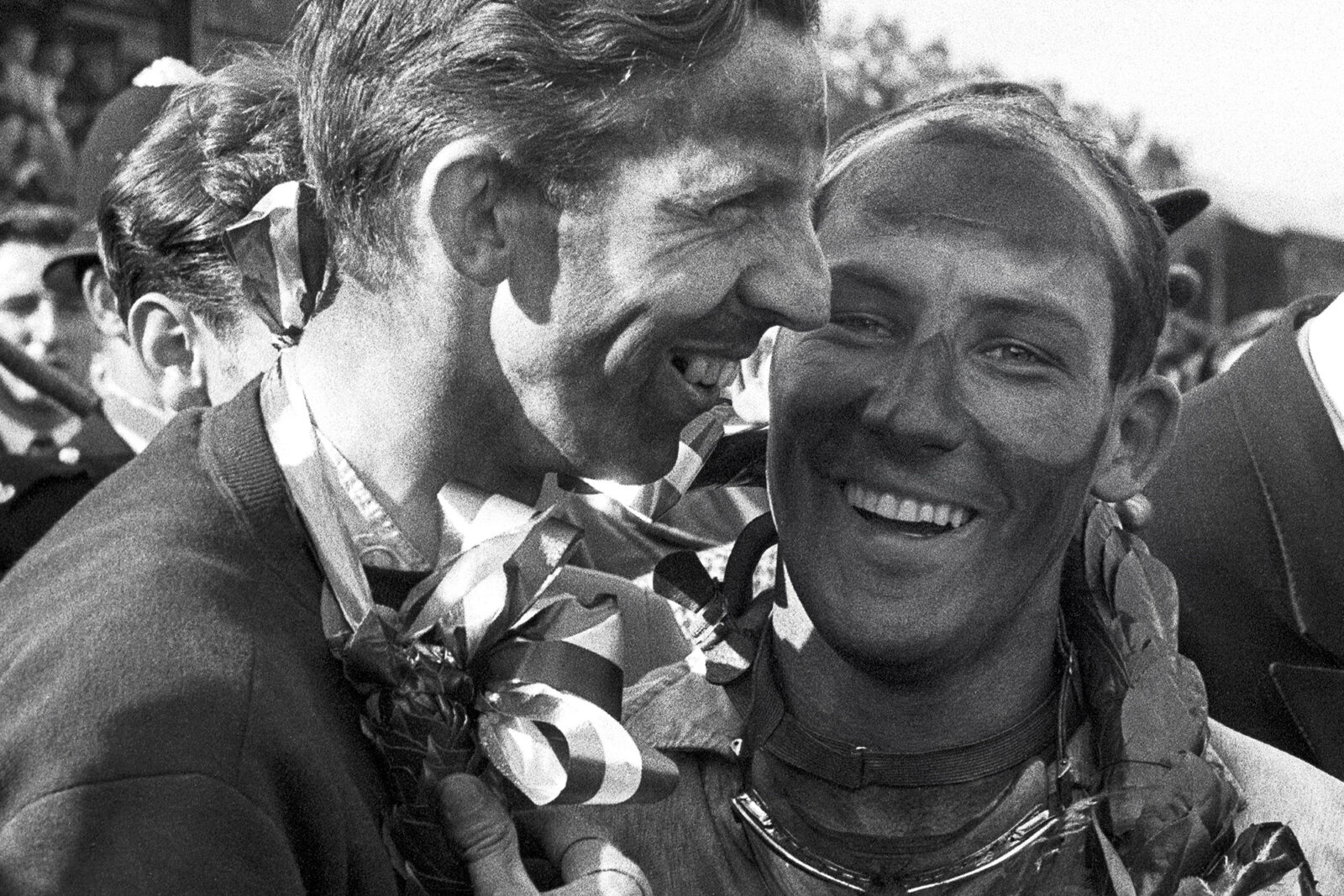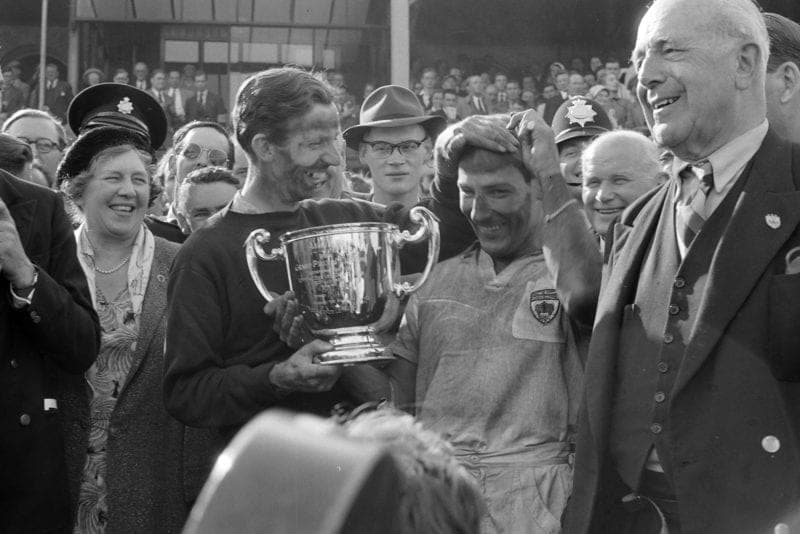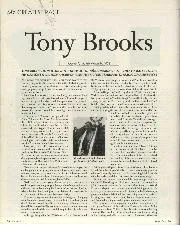So Tony Brooks was “doomed” to drive an uncompetitive Cooper-Climax for the private Yeoman-Credit team. “Frankly, the less said about this, the better, as one just couldn’t hope to keep up using last year’s equipment.” But things looked rather brighter for 1961 with an offer to rejoin BRM with Graham Hill and the promise of the powerful new V8. Sadly, things were to be little better and the BRMs were forced to rely on outdated Climax V8s while development of the new motor lagged behind. “It was ridiculous”, he remembers, “with just 130 b.h.p., you drove the things just like go-karts. It was disappointing and frustrating, particularly as the Ferraris were running quite as quickly as expected. For me it was particularly galling, knowing that could have been driving one.” Tony Brooks made his last racing appearance in a works BRM-Climax in the 1961 United States Grand Prix at Watkins Glen, finishing third behind the Lotus CIimax of Innes Ireland and the Porsche flat-8 of Dan Gurney. His mind finally made up, at the comparatively early age of 29 he retired from active motor racing immediately, knowing he was still competitive. “There were offers for me to stay at BRM with Graham Hill, and I could have returned to Ferrari, but you’ve got to take the decision some time. I’d just completed two disappointing seasons and felt that this was the right time to do it.”
The subject of retirements is something about which Brooks holds very strong views, feeling that a professional driver should know when to stop and withdraw from active participation at a time when he is still being approached with new contracts. “I don’t consider Fangio to have had any alternative at the age of 48, neither Stirling after such a dreadful crash. I do wish that people would realise that a good gambler quits while he’s ahead, as I feel they have a responsibility to their public as well as themselves.” Brooks still had irons in the fire right up until the end of his career, even though he was casting an eye to future retirement around 1960.
Having started it as a sideline, Brooks never felt that racing owed him a living in the manner that so many of today’s top pilots feel. The break was hard to make for he fully realised that there were few other occupations where one could combine a stimulating sport with world-wide travel in order to carry out one’s enjoyable “work”. That the current crop of Formula One drivers seem to moan continually about money and circuit safety just leaves a puzzled and unsympathetic expression on Brooks’ face. He enjoyed racing and to him the challenge of a demanding road circuit was simply something to savour, so he has no time for those who, in his own words, are out “prostituting the name of Grand Prix racing”.
It’s simply no good for today’s so-called experts to dismiss Brooks as an elderly eccentric with dim memories of racing at Brooklands to back up his idealistic thoughts. Now well groomed 41, he has a clear power of recall over some of the most formative years for Britain in the field of Grand Prix racing. He thought about his performance in the cockpit of a Grand Prix car, became one of the very first real technical drivers who fully understood precisely what his car was doing is well as what it was capable of doing and coupled ability behind the wheel with a genuine lack of conceit which earned him many friends and fans all over Europe.—A.H.




